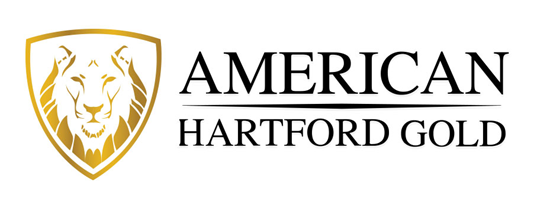Historical Theories
Theories about who discovered gold have been going on for so long that it's impossible to find out exactly who was responsible for the discovery and exactly where it comes from.
However, the first recorded account of gold dates back thousands of years ago to 4400 BC when humans began mining the ore from their surroundings.
Ancient Egyptian tombs were found filled with items crafted out of the precious stone which suggests its value was recognized early on by many cultures around the world. Gold was also used as currency during this period, highlighting its significance even further. It became a symbol of wealth and power, prompting some rulers to hoard large amounts for themselves while others gave it away as gifts or traded it between nations.
In addition to these historical records, there are several myths associated with gold’s discovery such as those involving Prometheus stealing fire from Zeus or King Midas transforming anything he touched into gold. These legends may be far-fetched but they contribute to our collective knowledge about how important this resource has become over time and why we continue to strive towards uncovering more information regarding who actually discovered it millennia ago.
The Chalcolithic Age
The Chalcolithic Age was a period of time in which humans began to discover and use metals, such as gold. It is seen as a turning point between the Stone Age and Bronze Age. During this era, there were major advances in human civilization, including agriculture and trade routes. Anecdotally, it was believed that around 5500 BC King Croesus of Lydia discovered gold when his workers stumbled upon it while digging for something else.
To illustrate the importance of this period in history, here are three key elements:
- The Chalcolithic Age marked the transition from hunter-gatherer societies to agricultural based economies;
- Trade networks were established allowing for goods and resources to be exchanged over large distances;
- New technologies allowed for metallurgy practices where copper ore could be melted down into tools or weapons.
This period was significant in regards to humanity's development because new technology enabled early civilizations to progress at an accelerated rate compared to previous eras. By learning how to produce more with less effort, people had more energy available for other pursuits like artworks or religious ceremonies. As we can see then, the Chalcolithic age provided many advancements that laid the foundations for further growth during the Bronze Age.
The Bronze Age
The Bronze Age is often seen as a time of great technological advancement, with the discovery and use of bronze tools. This period saw an increase in trade networks, leading to advancements in metallurgy and other crafts like pottery. It was during this era that humans discovered gold - an incredibly valuable resource for its malleability, resistance to corrosion, and rarity.
Gold objects have been found from many different cultures across Europe and Asia Minor dating back to the late 3rd millennium BC; however, it was not until later in the 2nd millennium BC that societies began to widely exploit gold’s properties more fully.
Gold became increasingly important in artisanship: it was used to make jewelry, ceremonial items such as cups or statues, and even currency forms. Its cultural significance meant that it had a strong influence on various aspects of life at the time: social status, religious practices, economics and politics. As such, the Bronze Age represents a pivotal point in ancient history where humanity's ability to manipulate their environment took another step forward towards modernity. With this newfound knowledge came greater understanding of both natural resources and human potential - paving the way for further progress into what we now know as 'the iron age'. It was during this time that gold began to be used more extensively.
The Iron Age
The Iron Age is an era that marked a major turning point in history. It was when the mighty empires of Greece and Rome rose to power, ushering in a new age of human civilization. Like a phoenix rising from the ashes, this period saw humanity progress from primitive societies into ones characterized by complex social structures, bustling cities, and technological innovations.
During this time, many advances were made such as the invention of iron tools and weapons, which revolutionized warfare tactics. This period also witnessed changes in art styles with monumental statues being created out of bronze and stone. Furthermore, it saw the emergence of philosophies like Stoicism and Epicureanism, which shaped culture for centuries afterwards. In essence, The Iron Age transformed the world forever – unlocking potentials that had been dormant since antiquity.
Conclusion
The discovery of gold has been a source of wonderment for centuries, with various theories and hypotheses about who first discovered it. While the exact origin may never be known, evidence suggests that humans have valued its properties since ancient times.
The Chalcolithic Age was when gold became widely used in jewelry, artworks, and coins as an ornamentation to signify wealth and status. The Bronze Age saw the use of gold expand into religious ceremonies and other forms of currency exchange throughout Europe and Asia. In the Iron Age, further advancements were made through metallurgy which allowed for more intricate items like tools to be crafted from this precious metal.
Gold remains an important resource today due to its highly conductive properties and malleability—two features that are essential within many industries including electronics production, medicine manufacturing, aerospace engineering, finance markets and much more. Its long lasting value is undeniable; even after all these years, it continues to capture our fascination with its mysterious origins.
Header |  |  |  |  | |
|---|---|---|---|---|---|
Best 5 Score | 5 | 4.9 | 4.8 | 4.5 | 4.3 |
BBB Rating | A+ | A+ | A+ | A+ | A+ |
Information Kit | Web Conference | Physical Kit | Book | ||
IRA Setup Fee | Free | Free | Free | Free | Free |
Annual Fee | $0-$180 | $0-$80 | $0-$80 | $90 | $0-$80 |
Storage Fee | $100 | $100-$150 | $150 | $100-$150 | $100 |
Minimum Investment | $50k | $25k | $5k | $5k | $10k |
Other Assets | No | Yes | Yes | No | Yes |
Promotion | N/a | 10% (max $10k) | $500 Silver | N/A | 10% (max $10k) |
Cell |
